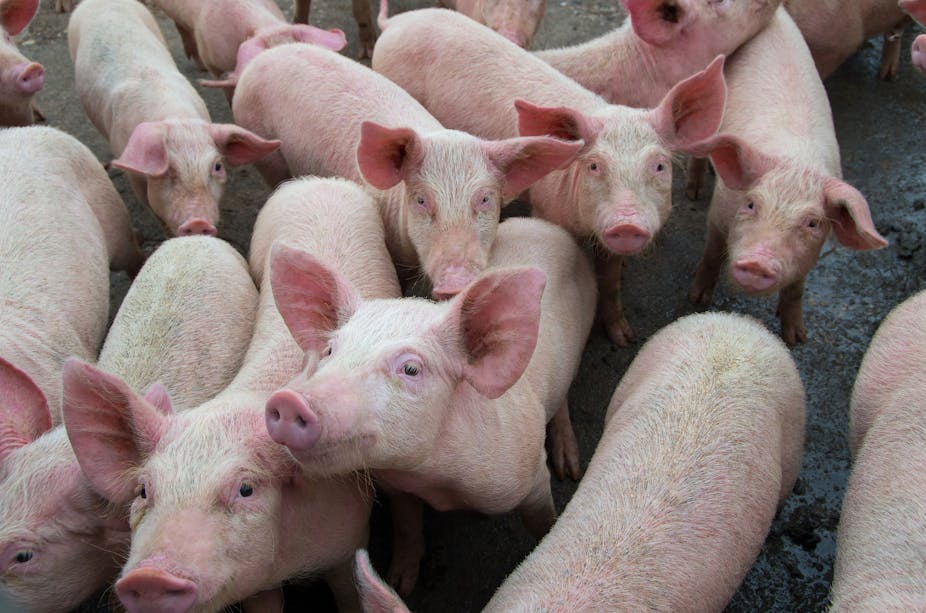Nigeria is in the throes of a fresh outbreak of African swine fever which has affected 145,000 pigs in Oke Aro, West Africa’s largest pig farm estate. Dr. Oladipo Omotosho of the Department of Veterinary Medicine, University of Ibadan, explains the disease, its impact and how to prevent future occurrences.
What is African swine fever?
African swine fever is a highly contagious haemorrhagic disease of pigs. It is caused by a virus and was first discovered in Kenya in 1921, in recently imported European pigs. The disease was transmitted from wild pigs, which are relatively resistant, and killed most of the domestic pigs.
The disease can be spread via ticks or among pigs by oral and nasal transmission. Pigs can also get infected through contamination of wounds or food. There is a wide range of symptoms, including loss of appetite, fever, skin haemorrhages, vomiting and abortion.
Commonly 40% to 85% of the pigs in a herd will be affected and those that will die may range from 20% to 100% of those affected. The pigs that survive then become carriers of the virus.
There is no treatment or vaccine.
The animals that die of any disease are not fit for human consumption. And the carcasses of pigs with the fever should be buried to prevent further spread of the virus from its body fluids.
It is not infectious for humans and does not directly affect public health. But the meat of diseased pigs is not safe for consumption.
The disease was confined to Africa until 1957, then spread from Angola to Lisbon. It is now seen around the world and is endemic in many sub-Saharan countries.
African swine fever can result in serious economic losses to farmers and in terms of government revenue and higher meat prices. For example, an outbreak in China in 2018 pushed up retail pork prices by 47%. China farms and consumes about half of the world’s pigs. A study in the US found that an outbreak could cost the industry US$50 billion over 10 years.
How serious is this latest outbreak in Nigeria?
The latest outbreak is at epidemic proportions. The rate of spread within and between farms is alarming and the death rate is higher than has been seen in the last 12 years. There are farms that have experienced the death of hundreds of pigs within 24 hours. The major reasons are weak farm biosecurity, disease surveillance and warning systems.
The disease has ravaged many areas, especially in Lagos and Ogun States. The main cluster of the outbreak is in Oke-Aro pig farm settlement, one of the largest pig farming estates in West Africa. It accommodates thousands of pig farmers with huge investments in the industry. It’s too early to say how great the total losses will be but it’s estimated that the Oke-Aro farm estate has already lost more than 145,000 pigs. This number excludes individual pig farms, large and small, that have been devastated by the disease.
This removes a source of affordable animal protein for many Nigerians. The livestock industry will take several years to recover from this outbreak. The last one like this was in 2008 and some farms have never resumed operation. Others down-scaled production because of the uncertainty linked to outbreaks.
How is African swine fever treated?
No treatment or effective vaccine against the virus is available, despite many attempts to develop one. Prevention and control of spread is therefore important. If it is suspected in a herd, measures should include: strict restriction of movement of infected pigs and carcasses; prompt diagnostic studies; identification and slaughter of all infected animals; depopulation of infected herds; and surveillance and detailed epidemiological investigation.
Farm premises must be thoroughly cleaned and disinfected after removal of all livestock. Replacement stock should be obtained from areas free of the disease, and strict biosecurity measures on farms are recommended.
What are the likely economic impacts of the disease?
It has serious economic impacts on the trade of swine, pig by-products, and food security, particularly in Nigeria where pigs are an important source of protein. It is estimated that Nigeria and neighbouring Ghana consume $3 billion worth of pork annually. Though data on this is scanty, production of pig meat for Nigeria was 283,793 tonnes in 2018 and the total number of pigs in 2011 was 7.1 million.
The number of affected farmers is not exactly known but they will lose capital and revenue. The government may lose funds in paying compensation and from loss of rents and tax paid by the farmers. There will be a short supply of pork and other pig products that may lead to higher prices. Suppliers of raw materials for pig feed will make lower sales. Export revenue will be hit because other countries will not want to receive pigs from an affected location. Banks and other financial institutions that fund farmers will be affected as some of their loans may become bad debts. And there will be economic losses through the humane killing of surviving pigs that carry the virus on affected farms.
What can be done to improve prevention in future?
Pigs that replace diseased stock or are used to start herds must be screened. All imported pigs should be screened for the virus too. The carriers have to be humanely destroyed and farmers must be compensated for this. All pig farms should be registered with government to standardise practice and make it easier to track disease.
Farmers should be trained and made to comply with biosecurity and sanitary measures to prevent diseases. They also need to insure their farms against disease outbreaks.
A system of national disease surveillance is needed to provide accurate information about the risk and prevalence of diseases so that government can make proper policies and interventions.

